It’s 5 p.m. on a Tuesday. You’re exhausted and still need to pick something up for dinner. The nearest grocery store is 15 miles away, and the only thing closer is a convenience store with higher prices and fewer healthy options. This is what it can be like to live in a food desert — one of several contributing factors of food insecurity. Food insecurity and limited or uncertain access to adequate food impacts millions of Americans each year. And the pandemic only compounded access and affordability issues that drive food insecurity like irregular income, unemployment and disability. Add to this heredity’s influence, race and ethnicity and you have a very complex picture of food-related health issues in 21-century America. While most social determinants of health lay outside of healthcare’s circle of influence, they create conditions that erupt inside its circle of treatment. In most cases, the healthcare industry faces acute to downstream effects in the form of imprope...
